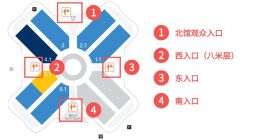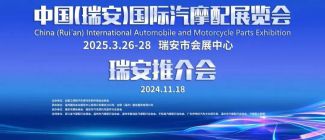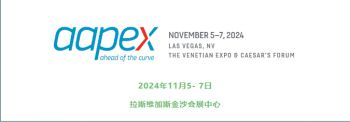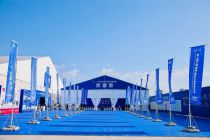Scan QRCode

Buses can not only serve as a means of transportation for freight transfer, but also carry goods for the last few kilometers. Since the beginning of this year, cross-border cooperation between express logistics companies and bus groups has continued to heat up, and multiple parties are working together to explore innovative paths for urban logistics distribution. When Shenzhen Bus Group signed cooperation agreements with SF Express and New Stone to transform bus stations into "supply stations" for logistics and unmanned vehicle delivery, a transformation of urban logistics ecology is quietly taking place.
In the first quarter of 2025, the profit dilemma of the logistics industry continues to ferment. According to the financial report data of top companies, the net profit per transaction of Shentong and Yunda has fallen to 0.04 yuan and 0.05 yuan respectively, and low profit operation has become the industry norm. The smoke of the price war has not dissipated, and the downward pressure on freight rates follows closely. The entire industry is still struggling to survive in the gap between costs and profits.
Coincidentally, the public transportation system in the field of urban passenger transport is also deeply mired in development. According to statistics from the Ministry of Transport, the passenger volume of public buses and trams in China in 2023 and 2024 will be 38.05 billion and 38.67 billion respectively, nearly halving the peak of 69.176 billion in 2019. In the first five months of 2025, passenger traffic will decrease by another 4.8% year-on-year, and the continuously shrinking market demand will make public transportation operations even worse. The development dilemma of logistics and passenger transportation industries has reached a critical point where they must break through.
It is in this context that the multiple natural advantages of the public transportation system - a wide coverage of urban networks, dedicated road rights, station resources, and policy support - make it an ideal choice to solve the "last five kilometers" of logistics terminal problems. This kind of resource integration and model innovation not only provides efficient solutions for logistics end distribution, but also has significant cost-effectiveness advantages, and to some extent provides a new path for the logistics industry, which is deeply mired in price quagmire, to reduce costs and increase efficiency.
The "nerve endings" attribute of the public transportation network endows it with irreplaceable logistics value. As early as in the practice of rural passenger, freight, and postal services, buses have taken on the important task of meeting the "last mile" needs of rural residents for travel, freight logistics, and delivery services.
On the one hand, buses have the natural logistics genes of urban capillaries, with bus stations scattered throughout the city circle, which can reach major communities, commercial districts, and towns in the city, making them ready-made transit points. These existing station resources can be transformed into logistics nodes without additional investment in construction, and the wide coverage of bus routes, combined with the traffic advantages of dedicated road rights, can better break through the constraints of urban traffic restrictions and achieve efficient penetration from point to surface.
With the support of policy dividends, the logistics potential of the public transportation system has been further activated. The policies such as electricity price subsidies and land use tax reductions enjoyed by new energy public transportation are precisely in line with the cost reduction demands of logistics enterprises. The currently promoted "bus+logistics" model mostly focuses on the "last five kilometers" scenario of cities, where buses are responsible for urban transportation and unmanned vehicles complete community connections, thus building a more efficient distribution chain.
On the other hand, bus delivery has significant advantages in cost control. The "last five kilometers" of traditional logistics account for 50% -60% of the entire logistics distribution cost, making it the highest cost proportion. The public transportation system converts idle capacity into logistics power through resource reuse, avoiding the depreciation cost and empty driving loss of traditional logistics vehicles. According to public reports, the sorting center for passenger, freight, and postal express delivery in Miluo City receives more than 160000 parcels per day, which are transported by over 30 urban and rural passenger buses to 122 village level stations throughout the city. The overall sorting efficiency has increased by 30% and the cost has decreased by 20%.
This "one vehicle dual use" model not only revitalizes idle public transportation resources, but also opens up low-cost paths for logistics enterprises.
The cross-border entry of the public transportation system into the logistics track is essentially a chain reaction caused by the imbalance of supply and demand in the passenger transportation field, which in turn exacerbates the supply-demand contradiction in the logistics market, forming a complex situation of two-way oscillation. In the already fiercely competitive logistics vehicle market, the entry of the public transportation system is like adding insult to injury - its network covering 95% of urban nodes and the advantage of dedicated lane rights are continuously diverting the end orders of traditional logistics vehicles, directly promoting the reconstruction of the industry ecosystem.
On the one hand, the diversity revolution of logistics tools has ushered in the entry of new forces. For buses, there is already a situation of active adaptation. It is no longer limited to passenger transportation functions and is entering the logistics market across borders. The addition of bus companies has broken the pattern of vehicles being dominated by OEMs, and the competition among multiple parties has become increasingly fierce. Nanjing Public Transport and SF Express have launched a new mode of "same city express delivery line" for route 503. The buses have been equipped with an independent "Little Blue Whale SF Half day Delivery Warehouse" in the back seat, which is physically separated from the passenger area in front. This proactive adaptation to logistics needs marks the official emergence of buses as a new competitor in the logistics tool matrix.
On the other hand, the continuous diversification of transportation service providers has intensified market competition. Traditional participants include logistics and transportation companies, instant freight platforms, asset operation service providers, and a large number of small and medium-sized enterprises facing new challenges. As a strong emerging transportation provider, the public transportation system has built significant operational cost barriers relying on policy dividends and road rights advantages. This puts traditional transportation providers in a dilemma: they may not have any orders to take on, and they may not make any profit due to the low price competition of public transportation.
The evolution of logistics vehicles has never stopped. When single function transportation vehicles are difficult to adapt to complex scenarios, cross type passenger cars with both passenger and freight functions are becoming the optimal solution to solve idle transportation capacity. In the future, it is unknown whether traditional logistics vehicles will launch dual-purpose models for both passengers and cargo, but their development path deserves continued attention.
Cross border logistics in the public transportation system is not simply a matter of "grabbing business", but a breakthrough driven by the dual pressures of shrinking passenger transport and low logistics profits. Public transportation has transformed from a single passenger transportation tool into a key node in the logistics network, and its resource reuse mode has opened up low-cost paths, which has also intensified the competition intensity in the transportation market. This is not only the optimization and reorganization of urban transportation resources, but also the trend of "tool competition" moving towards "ecological synergy".
AMS2024 Exhibition Guide | Comprehensive Exhibition Guide, Don't Miss the Exciting Events Online and Offline
Notice on Holding the Rui'an Promotion Conference for the 2025 China (Rui'an) International Automobile and Motorcycle Parts Exhibition
On September 5th, we invite you to join us at the Wenzhou Auto Parts Exhibition on a journey to trace the origin of the Auto Parts City, as per the invitation from the purchaser!
Hot Booking | AAPEX 2024- Professional Exhibition Channel for Entering the North American Auto Parts Market
The wind is just right, Qianchuan Hui! Looking forward to working with you at the 2024 Wenzhou Auto Parts Exhibition and composing a new chapter!
Live up to Shaohua | Wenzhou Auto Parts Exhibition, these wonderful moments are worth remembering!
Free support line!
Email Support!
Working Days/Hours!





